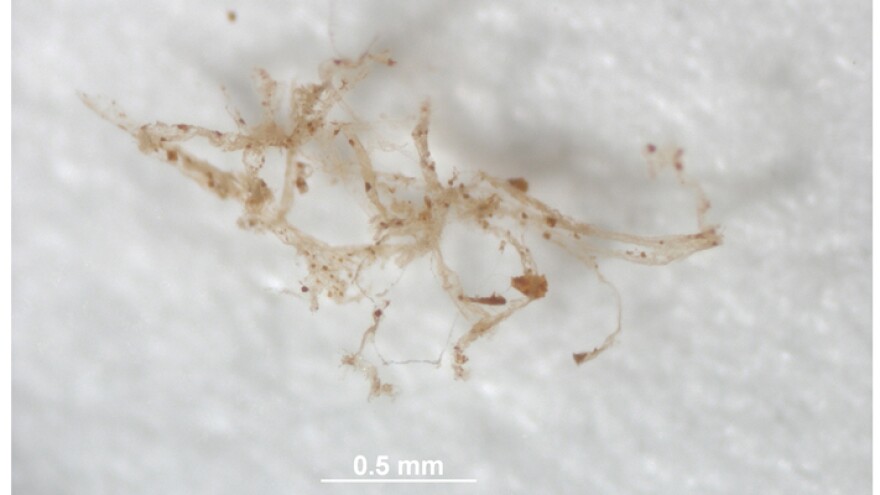SciWorks Radio is a production of 88.5 WFDD and SciWorks, the Science Center and Environmental Park of Forsyth County, located in Winston-Salem. Follow Shawn on Twitter @SCIFitz.

You are a paleontologist on expedition hunting dinosaur fossils. For all your efforts, you've unearthed just a few bone fragments. Back at the lab, you and your team determine that, based on their shape and size, you're looking at a colossal waste of time and resources.
If it's any consolation, the fact that those fossils were even there for you to find is amazing in itself. An animal has to undergo very specific circumstances after death for its bones to be essentially turned into rock. And, according to Dr. Elena Schroeter, Postdoctoral Researcher at NC State University, we don't even fully understand how fossils are made.
There's a lot of room for discovering exactly how fossilization occurs. A lot of the time, we actually have to look at experiments that we do in real time over shorter amount of time . . . If it were really easy for things to preserve, or if they didn't break down, then we would be buried in the bones of vertebrates past. Something interesting is already happening in a fossil that is keeping it from degrading like all of the millions and millions and millions of other bones that have ever existed. So, if that's occurring, it stands to reason that other chemical processes could be occurring that can preserve things like protein even if the chemical models we make don't predict that.
And that could be helpful to you, my unhappy paleontologist friend. In fact, protein has been found preserved in fossils up to 80 million years old! You can hear a lot about that on a past episode of SciWorks Radio.
One of the primary ways paleontologists, right now, are able to get at evolutionarily relationships is simply looking at the shape of bones. And that can be very limiting because there are a lot of things that can evolve to have similar shapes even though they're not related; things like ichthyosaur, which looks very much like a dolphin - totally unrelated, but they look very similar superficially. With dinosaurs, some of the species will be known from really, really partial skeletons. If you can imagine having one species is known from an arm and maybe a part of the skull and another species is part of this skull and another species known for its tail and another species known from a leg, there's no way to compare all the species together.

Blood vessels from deminineralized bone of B. canadensis -NC State
But the protein being pulled from ancient dinosaur fossils (in this case collagen 1 for anyone keeping track) IS original material and can be used to help identify and classify your non-descript, formerly-disappointing bone fragments. You've just gone from Zero to Hero!
Proteins, because they are coded from DNA, actually do carry phylogenetic, or evolutionary, information, and you actually can get at some information about how species are related to one another simply from being able to compare protein sequences.
Like most research, Dr. Schroeter's work has implications far beyond her lab.
There have been animals that have experienced massive climate change before, and their adaptations and responses to that would be in their molecules. If we are actually able to get more molecular data from extinct animals, we may actually be able to analyze molecular trends in response to certain climate shifts or just environmental shifts. (Learn more about climate change in deep time on this SciWorks Radio episode). So basically what we're doing now is we're trying to get tiny amounts of preserved proteinaceous material out of rock-like fossils. So if you're looking for trace amounts of life on other planets, the techniques that we are optimizing are going to be the type of thing that you're gonna want to look at for how to analyze whether or not we're getting organic material in a different form of rock. We're looking at the stability and the chemical degradation and changes to a protein in strange chemical environments, we might be able to say something about proteins in strange human chemical environments. So Alzheimer's actually is the inability of a protein in your brain to break down, and we're looking at proteins that, against conventional wisdom, don't break down. So, even though we are looking at something like dinosaurs - which is awesome - you can apply this in a lot of different ways outside of dinosaurs.
This Time Round, the theme music for SciWorks Radio, appears as a generous contribution by the band Storyman and courtesy of UFOmusic.com.

